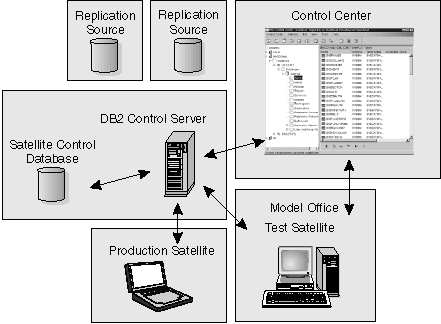

A model office is a special member of the test satellites in the group. Typically, you will have one model office for each version of the end-user application that you have deployed in the group. You can use a model office for a variety of purposes:
When the model office is set up, you can create a response file that is based on the model office. You can use the response file to install large numbers of satellites. For more information, see Chapter 10, Performing a Mass Deployment.
The model office provides a representative database, which you can work with using tools such as the Control Center and the Satellite Administration Center. Using the model office, you can generate scripts from the different SmartGuides, notebooks, and windows available in the Control Center. You verify the behavior of the scripts by submitting them to execute against the model office. This means that the production environment is almost entirely isolated from the changes that you make to the model office. When you are satisfied with the database definition changes that the scripts produce on the model office, you can promote the scripts to production. The changes will then be executed by the group's production satellites.
Because the model office represents a typical satellite, it can be useful for problem determination. If an end-user experiences a problem, you can use the model office, or a copy of it, to reproduce the problem and determine how to fix it.
Figure 1 provides an overview of how the Control Center, the DB2 control server, and the model office can interact.
 |
For more information, see Chapter 6, Working with the Model Office.
[ Top of Page ]